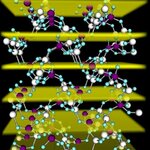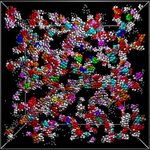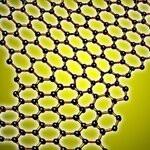Chemistry

Senator John McCain's exuberant proposal that the U.S. government fund a massive X-prize style research push for a efficient automobile-scale electric battery points up several problems with the way science is funded in the United States today.
First, the power to decide what technical direction research will follow is ultimately in the hands of politicians. Sometimes these are powerful politicians working for special interests; sometimes they are well-meaning people seeking to fix a real problem. Always, these decision-makers are subject to the law of unintended consequences, or at best tend…

Data from Google Trends is being used in Pensacola, FL to settle a legal question in an obscenity trial; the argument raised by the defense is that if Google's data shows that the term (for instance) "orgy" is a more popular search criterion than, say, "NASCAR," then clearly the community at large embraces the result of that search and it cannot be considered obscene by community standards.
This is a fascinating problem on many levels. It is obvious to even an occasional user of the internet that many of the people who surreptitiously searched for "orgy" themselves consider the material…

This material originates from volcanoes but in synthesized form it takes up around a third of the average packet of washing powder and it also helps refine 99 per cent of the world's petrol (*) - when it's not used to clean up nuclear waste.
You've probably never heard of it but this extremely useful material is a zeolite. A European team of scientists has revealed, for the first time, its chemical structure using the European Synchrotron Radiation Facility (ESRF). This research opens door to more effective zeolites in the future.
Zeolites are crystalline white minerals, mostly made of…

Glass has always been a chemical and physical puzzle. Unlike most solids, glass is actually more like a slow-moving liquid - a 'jammed' state of matter that moves very slowly. Like cars in traffic, atoms in a glass can't reach their destination because the route is blocked by their neighbors, so it never really becomes a solid.
For more than 50 years most scientists have tried to figure out the glass puzzle. Work so far has concentrated on trying to understand the traffic jam, but now Dr Paddy Royall from the University of Bristol, with colleagues in Canberra and Tokyo, has shown that the…

While the results may not rival the artistry of glassblowers in Europe and Latin America, researchers at the National Institute of Standards and Technology (NIST) and Cornell University have found beauty in a new fabrication technique called "nanoglassblowing" that creates nanoscale (billionth of a meter) fluidic devices used to isolate and study single molecules in solution—including individual DNA strands.
Traditionally, glass micro- and nanofluidic devices are fabricated by etching tiny channels into a glass wafer with the same lithographic procedures used to manufacture circuit patterns…

How do grains flow out of an emptying silo? And what about sugar poured out by a pastry chef?
Researchers at Centre de Physique Moléculaire Optique et Hertzienne (CPMOH) of CNRS/ Université Bordeaux 1 have just demonstrated that even without an attractive force between grains in flowing sand, they have a cohesion similar to that of liquids. These results were published in Physical Review Letters.
The surface of a liquid is similar to an elastic membrane under tension, which causes things like the pressure on the interior of soap bubbles. This “surface tension” is due to cohesion forces…

The familiar pencil-lead form of carbon, graphite, consists of layers of carbon atoms tightly bonded in the plane but only loosely bonded between planes; because the layers move easily over one another, graphite is a good lubricant. In fact these graphite layers are graphene.
Graphene is the two-dimensional crystalline form of carbon: a single layer of carbon atoms arranged in hexagons, like a sheet of chicken wire with an atom at each nexus. As free-standing objects, such two-dimensional crystals were believed impossible to create -- even to exist -- until physicists at the University of…

It’s stronger than steel and nylon, and more extensible than Kevlar.
What is this super-tough material? Spider silk; and learning how to spin it is one of the materials industries’ Holy Grails.
John Gosline has been fascinated by spider silks and their remarkable toughness for most of his scientific career. He explains that if we’re to learn how to manufacture spider silk, we have to understand the relationship between the components and the spun fibre’s mechanical properties; which is why he is focusing on major ampullate silk, one of the many silks that spiders spin. According to Gosline…

Titanium is the lightweight metal of choice for many applications and a non-melt consolidation process being developed by Oak Ridge National Laboratory may make it cheap enough to bulletproof your Prius. Or a military vehicle, if you want to be predictable.
The new processing technique could reduce the amount of energy required and the cost to make titanium parts from powders by up to 50 percent, making it feasible to use titanium alloys for brake rotors, artificial joint replacements and armor for vehicles.
The lightweight titanium alloy also improves the operation of the door and…

A type of plastic that exhibits metallic and semi-conductor-like properties will be described in an inaugural doctoral lecture at the University of Leicester on Wednesday June 4th(*).
In his lecture, Dr. M. A. Mohamoud will discuss a novel class of materials called “conducting polymers.” Conducting polymers are smart materials that can mimic biological systems and can be used as components of artificial nerves, electronic noses/tongues, drug-release-and-delivering systems, and artificial muscles.
They can also be used as energy storage devices in battery technology, electrochromic display…